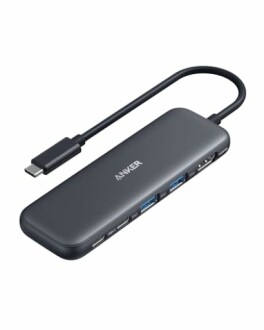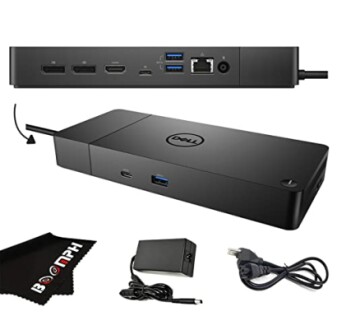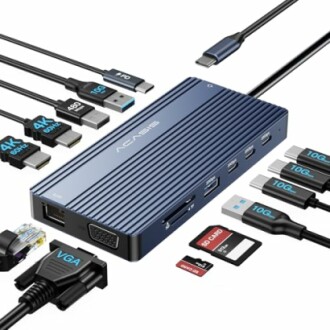
Comparing Top Docking Stations for Modern Workspaces
Key Takeaways
- Docking stations enhance connectivity and productivity, particularly for laptop users.
- Evaluate compatibility with your devices and required ports for optimal performance.
- Consider features such as power delivery, multiple display support, and fast data transfer rates.
- Choosing the right docking station can significantly improve your workstation efficiency.
As our workspaces evolve, so too does the need for effective and versatile docking stations. Docking stations serve as command centers for modern laptops, providing essential connections that allow seamless integration of multiple peripherals and displays. In this article, we will compare top docking stations based on their capabilities, compatibility, and overall user experience to help you elevate your work setup.
Why You Need a Docking Station
A docking station can transform your laptop into a fully functional workstation. Here are some essential reasons to consider:
- Enhanced Connectivity: Easily connect multiple devices, including monitors, printers, and external storage.
- Improved Ergonomics: Elevate your laptop for better viewing angles, reducing strain.
- Quick Charge: Power up your laptop and devices quickly with high wattage charging options.
Key Features to Look for in a Docking Station
Before purchasing a docking station, consider these features:
- Number and type of ports.
- Maximum resolution and number of displays supported.
- Power delivery capabilities.
- Data transfer speeds.
Comparison of Top Docking Stations
| Product | Ports | Supported Resolution | Power Delivery | Best For |
|---|---|---|---|---|
Anker 332 USB-C HubEquipped with a 4K HDMI port and a variety of USB ports for high-speed data transfers. Learn More |
5-in-1: 1 HDMI, 2 USB-A, 1 USB-C, 1 PD-IN | 4K@30Hz | 85W Pass-Through Charging | MacBook & HP Laptops |
Dell WD19S Docking StationDesigned for powerful performance with a variety of ports for maximum versatility. Learn More |
5 USB, 2 DisplayPort, 1 HDMI | 3840 x 2160 @ 60Hz | 90W Power Delivery | Notebook Users |
14 in 1 USB C Docking StationA versatile docking station supporting multiple displays and charging at high speeds. Learn More |
14 Ports: 2 HDMI, USB 3.0, Ethernet | 4K@60Hz and 1080P | 100W Fast Charging | Users Needing Dual Displays |
Pros and Cons of Each Docking Station
Pros
- Anker 332 USB-C Hub:
- Compact design with excellent portability.
- Great compatibility with various laptops.
- Dell WD19S:
- Powerful performance with multiple video outputs.
- Excellent build quality.
- 14 in 1 USB C Docking Station:
- Ultimate versatility with numerous ports.
- Supports triple display makes multitasking seamless.
Cons
- Anker 332 USB-C Hub:
- Limited to only one HDMI output.
- Dell WD19S:
- Higher price point compared to basic models.
- 14 in 1 USB C Docking Station:
- May have excess ports not utilized by all users.
Choosing The Right Docking Station
Selecting the right docking station comes down to your specific needs. Here are some tips that can guide your choice:
Tips for Beginners
- Assess which devices you will frequently use.
- Determine the number of displays you want to connect.
- Prioritize power delivery features if you're using power-hungry laptops.
Conclusion
A well-chosen docking station can significantly improve your home office setup. By facilitating a seamless workflow and providing essential connectivity options, docking stations are a vital part of modern workspaces. Whether you choose the Anker 332, Dell WD19S, or ACASIS 14 in 1 USB C Docking Station, ensure that your choice aligns with your specific needs for a productive workspace.
For more comprehensive information about making the best choices for your home office, check out our resources on multi-monitor setup solutions and computer accessories essentials.


